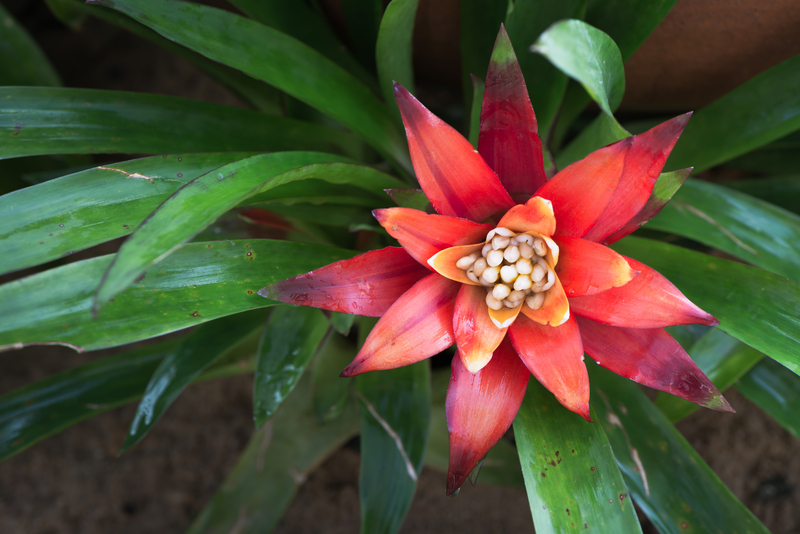Starting Anew: Transformative Steps for a Neglected Garden
Posted on 14/06/2025
Starting Anew: Transformative Steps for a Neglected Garden
Have you recently moved into a new home with an unloved outdoor space or simply let your once-beautiful backyard become overgrown? Starting anew with a neglected garden is an exciting opportunity to create your own lush retreat. In this comprehensive guide, we'll walk you through the transformative steps for reviving even the most forgotten garden. Armed with inspiration and practical advice, you'll soon enjoy blossoming borders and vibrant, healthy greenery.
Assessing the Condition: Laying the Groundwork for Renewal
Before diving in, it's essential to take a detailed look at the current state of your garden. This initial assessment will set a foundation for all future improvements.
- Walk the entire garden: Keep notes or photos of areas with dense weeds, dying trees, or hidden features.
- Identify existing plants: Pinpoint what's salvageable and which plants need to go.
- Check the soil: Healthy soil is crucial for a thriving garden. Look for signs of poor drainage, compacted earth, or lack of nutrients.
- Observe sunlight patterns: Not all areas receive equal sunlight. Note shaded and sunny spots for planning your future plantings.
Documenting the Neglected Garden
Use your phone or a camera to document all corners of the neglected garden. Capture images from multiple angles and focus on problematic zones like overgrown beds, crumbling borders, and patchy lawns. This visual record will help you track progress and motivate you as improvements unfold.

Clearing the Slate: Removing Old Growth and Debris
The next transformative step involves clearing away what's no longer useful or healthy. Removing weeds, dead wood, and debris allows your new garden to breathe--and lays the foundation for revitalization.
- Weed ruthlessly: Pull out stubborn weeds by the roots to prevent regrowth.
- Prune overgrown shrubs and trees: Cut away dead branches and shape overgrown plants to rejuvenate growth.
- Dispose of rubbish: Broken pots, old fencing, and rotting furniture should be removed to clear valuable space.
- Address hard landscaping: Inspect paths and patios for repair or replacement.
Pro Tip:
Recycle green waste by starting a compost pile--an eco-friendly step for your rejuvenated garden!
Understanding the Soil: The Secret to a Thriving Garden
Healthy soil underpins every sprawling flowerbed and lush lawn. After clearing away debris, it's time to discover what your earth needs to support new growth.
- Test the soil: Home soil test kits can measure pH and nutrient levels. Most plants prefer slightly acidic to neutral soil (pH 6-7).
- Amend as needed: If your soil is clay-heavy, sandy, or depleted, add organic matter such as compost, well-rotted manure, or leaf mould.
- Improve drainage: Digging in organic matter helps lighten heavy soil and boosts drainage for waterlogged areas.
- Mulch liberally: Mulching suppresses new weeds and keeps moisture in, giving new plantings a head start.
Building Structure: Planning Your New Garden Layout
It's tempting to plant right away, but strategic planning will prevent headaches later. Start by sketching a simple layout for your rejuvenated garden.
- Decide how you want to use the space: Entertaining? Growing food? Wildlife sanctuary? Your vision will guide the design.
- Divide the garden into "rooms": Use paths, hedges, or borders to separate lawns, beds, and relaxing sitting areas.
- Plot the position of sun-loving and shade-tolerant plants: Take advantage of your earlier sunlight observations.
- Allow for access and maintenance: Wide paths and accessible water points make upkeeping the new garden easier.
Transforming the Lawn: From Patchy to Pristine
A neglected lawn is often the most visibile sign of an uncared-for garden, but it's also the fastest to transform.
- Clear large weeds and stones: Remove anything that could obstruct mowing or new grass seedlings.
- Reseed or lay new turf: For severely bald lawns, reseeding may be necessary. Use a fork or aerator to loosen compacted soil before reseeding.
- Feed the grass: Apply a balanced lawn fertilizer to kickstart growth.
- Establish mowing habits: Regular mowing will keep your revitalized lawn lush and healthy.
Alternative Lawns:
Consider wildflower meadows or clover mixes as low-maintenance, pollinator-friendly alternatives for your new garden!
Reviving Borders and Planting Beds: Choosing the Right Plants
Borders and beds offer instant impact in any transformed garden. Start by removing tired annuals and spent perennials, then enrich the soil with compost.
- Choose resilient, easy-care perennials: Daylilies, lavender, and hostas are excellent options.
- Mix heights and textures: Combine tall shrubs with groundcovers for visual interest year-round.
- Plan for year-round color: Mix early spring bulbs, summer perennials, and autumn foliage plants for a continual show.
- Emphasize native species: Local plants are better adapted and boost local ecosystems.
Dividing and Rejuvenating Perennials
Established but neglected perennials often benefit from division. Use a spade to separate them, replanting healthy sections into freshly amended soil for more abundant blooms next season.
Installing New Features and Focal Points
As you refresh your renewed garden, consider adding focal points and functional features that boost both beauty and usability.
- Seating areas: Benches or garden swings provide restful spots to enjoy your revitalized space.
- Pathways and patios: Fresh gravel, stepping stones, or paving define spaces and make the garden more accessible.
- Ponds and birdbaths: Water features attract wildlife and invite tranquility.
- Arches and obelisks: Use these as supports for climbing roses or clematis, drawing the eye upward to new heights of beauty.
Lighting for Ambience
Solar-powered lights, string lighting, or lanterns can turn your garden into an enchanting oasis after sunset--perfect for relaxing evenings outdoors.
Maintaining Momentum: Tips for Ongoing Garden Success
Having restored your neglected garden, a few new habits will ensure it stays healthy and beautiful. Consistent care is the secret to long-term transformation.
- Water deeply but infrequently: Encourage deep root growth by soaking, not sprinkling.
- Weed regularly: Prevent weeds from taking over by pulling them as soon as you spot them.
- Feed organically: Top-dress beds with compost or organic fertilizer each season.
- Prune for health and shape: Regularly cut back shrubs and remove spent blooms for better flowering.
Embracing Wildlife and Sustainability
A newly restored garden can do more than just look good--it can support pollinators and wildlife. Leave some areas wild, add a log pile or native hedge, and choose plants that feed bees and butterflies. Mulch with organic matter to conserve water and suppress weeds, making your garden transformation eco-friendly.
Before and After: Celebrating Your Garden Makeover
Transforming a neglected backyard into a dazzling sanctuary brings immense satisfaction. Keep a photo record to look back on your garden's progress--it's rewarding to see the difference your hard work makes over time. Invite friends and family to enjoy your revitalized outdoor space, or even share your journey on social media to inspire others.

Common Challenges and How to Overcome Them
- Persistent weeds: Tackling weeds may require repeated efforts. Stay vigilant, and use organic mulches to suppress future growth.
- Soil problems: Poor soil can be transformed over a single season with regular additions of compost, green manure, and mulch.
- Lack of time: Start small! Tackle one section at a time. Even a single new bed or a fresh lawn patch feels rewarding.
- Unfamiliarity with plants: Consult local garden centers or online resources to choose hardy, low-maintenance plants tailored to your climate.
Transformative Garden Ideas for Every Style
- Cottage gardens: Mix dense, colorful plantings of roses, foxgloves, and delphiniums.
- Modern minimalist: Choose architectural plants like grasses and evergreens with sharp borders for clarity.
- Wildlife-friendly: Plant wildflowers, create ponds, and install bat boxes or bee hotels.
- Edible landscapes: Grow herbs, fruits, and vegetables alongside ornamentals for beauty and bounty.
Taking the First Step: Your Neglected Garden Awakens
Restoring a neglected garden is a journey--one that renews not only your outdoor space, but your appreciation for natural beauty. Every small improvement compounds; the effort you invest today transforms into tomorrow's lush growth and vibrant blooms.
Ready to begin your own garden transformation? Gather your gloves, your tools, and your vision. By starting anew and following these transformative steps for neglected gardens, you'll cultivate an outdoor haven that welcomes, inspires, and rewards you for years to come.

